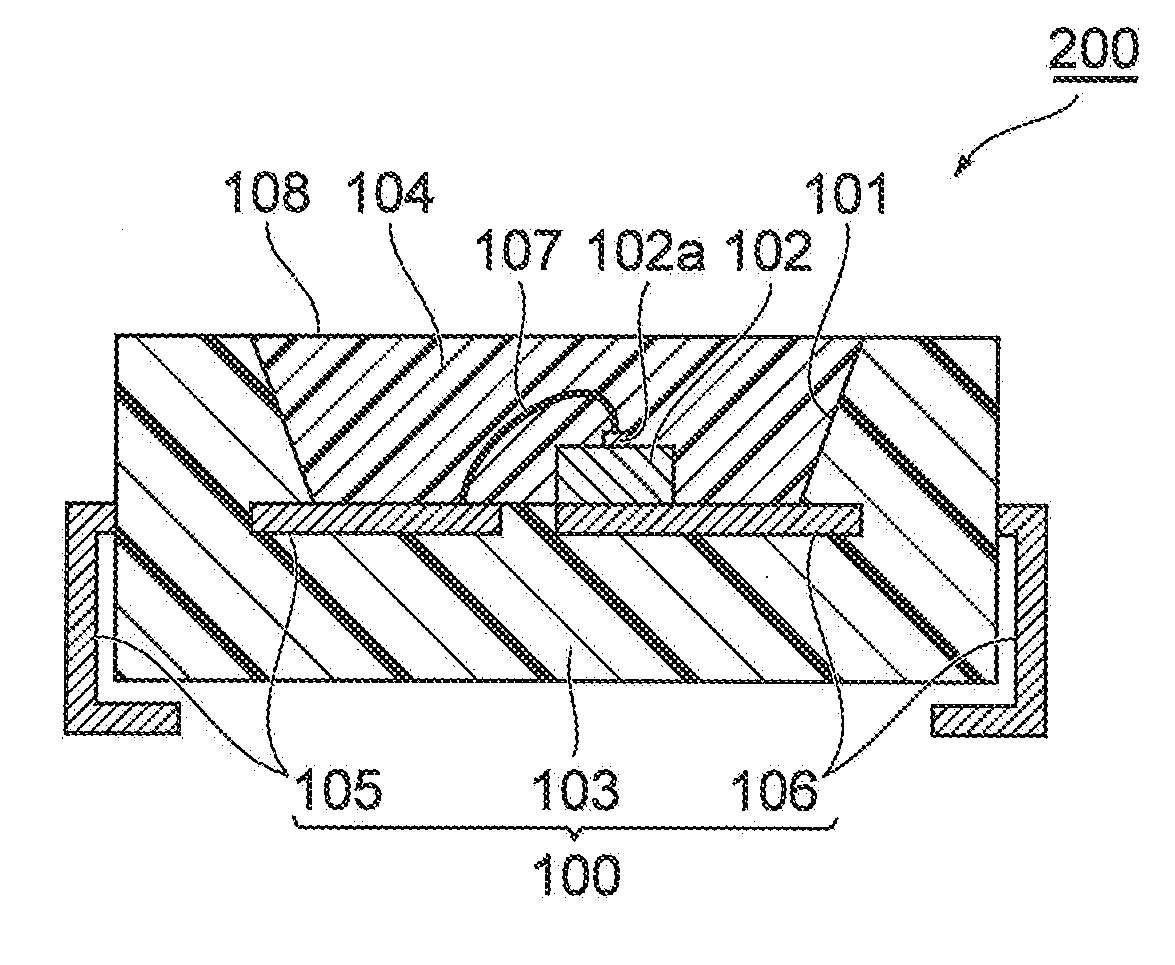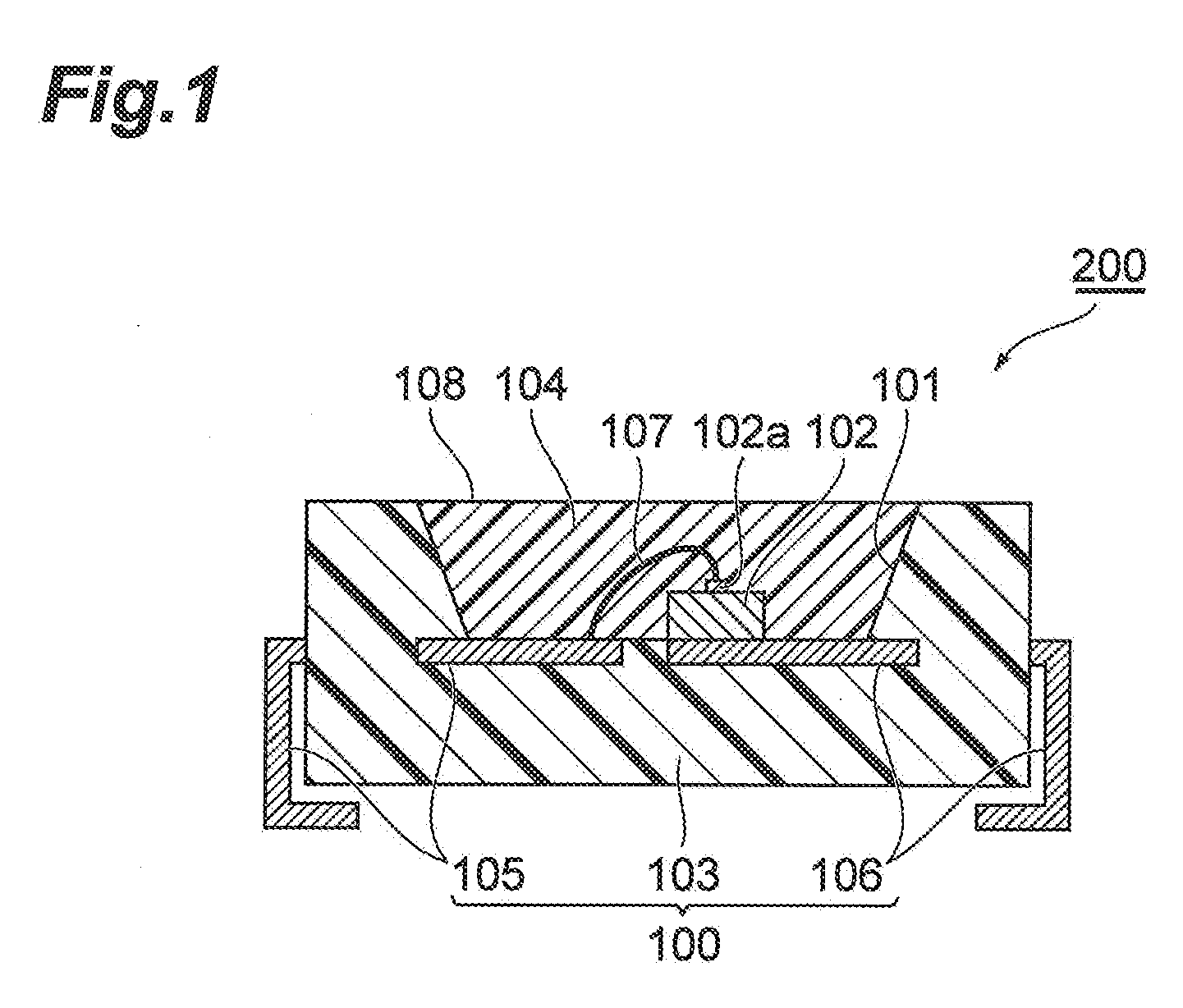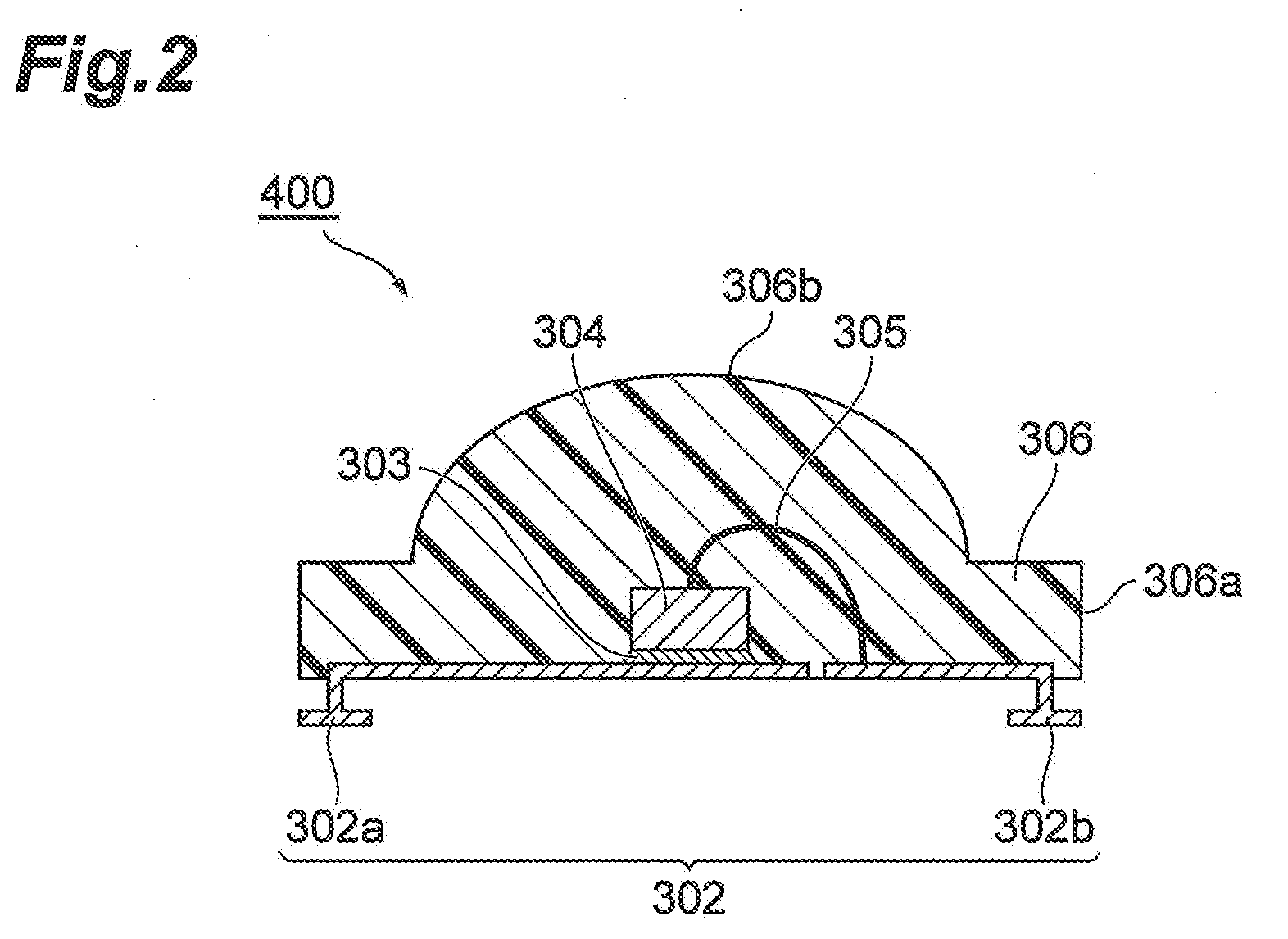Urethane resin composition, cured object, and photosemiconductor device using cured object
a technology of urethane resin and cured objects, which is applied in the direction of semiconductor devices, solid-state devices, semiconductor/solid-state device details, etc., can solve the problems of adverse effect on stability during storage, adverse effect of cured products, and inferior reactivity of aliphatic isocyanates and alicyclic isocyanates with polyols compared to aromatic isocyanates, etc., to achieve excellent curing acceleration effect, sufficient long pot life, and high transparency
- Summary
- Abstract
- Description
- Claims
- Application Information
AI Technical Summary
Benefits of technology
Problems solved by technology
Method used
Image
Examples
example 1
[0220]After adding 9.7 parts by weight of polyol (A1) to 27.1 parts by weight of isocyanate (B1) and 24.4 parts by weight of isocyanate (B2), the mixture was reacted at 80° C. for 6 hours under a nitrogen atmosphere to prepare an isocyanate group-remaining prepolymer. To the isocyanate group-remaining prepolymer there was added 0.05 part by weight of zinc stearate (C1) as a curing catalyst to prepare an isocyanate component solution B.
[0221]Also, 0.1 part by weight of an antioxidant (D1) was added to 38.7 parts by weight of polyol (A1), and the mixture was heated and stirred at 80° C. for 1 hour under a nitrogen atmosphere to prepare a transparent, homogeneous polyol component solution A.
[0222]Next, 61.25 parts by weight of solution A and 38.8 parts by weight of solution B were mixed and stirred at room temperature to transparent homogeneity to prepare a resin composition.
example 2
[0223]After adding 4.5 parts by weight of polyol (A2) to 54.6 parts by weight of isocyanate (B3), the mixture was reacted at 80° C. for 6 hours under a nitrogen atmosphere to prepare an isocyanate group-remaining prepolymer. To the isocyanate group-remaining prepolymer there was added 0.05 part by weight of zinc stearate (C1), to prepare an isocyanate component solution B.
[0224]Also, 0.1 part by weight of an antioxidant (D1) was added to 40.9 parts by weight of polyol (A1), and the mixture was heated and stirred at 80° C. for 1 hour under a nitrogen atmosphere to prepare a transparent, homogeneous polyol component solution A.
[0225]Next, 41 parts by weight of solution A and 59.2 parts by weight of solution B were mixed and stirred at room temperature to transparent homogeneity to prepare a resin composition.
example 3
[0226]After adding 8.1 parts by weight of polyol (A2) to 18.1 parts by weight of polyol (A1), the mixture was heated and stirred to prepare a polyol component solution A.
[0227]Next, 1.5 parts by weight of polyol (A2) was mixed with 15.2 parts by weight of isocyanate (B1), and the mixture was heated and stirred at 100° C. for 3 hours under a nitrogen atmosphere to prepare an isocyanate group-remaining prepolymer. After mixing 16.7 parts by weight of the isocyanate group-remaining prepolymer, 15.9 parts by weight of isocyanate (B4), 41.2 parts by weight of isocyanate (B5) and 0.1 part by weight of an antioxidant (D1), the butyl acetate was distilled off to obtain a homogeneous resin solution. To this resin solution there was added 0.05 part by weight of zinc stearate (C1) as a catalyst, and the mixture was heated and stirred to prepare a polyisocyanate component solution B.
[0228]Solution A and solution B were mixed and stirred at room temperature to transparent homogeneity to prepare ...
PUM
| Property | Measurement | Unit |
|---|---|---|
| density | aaaaa | aaaaa |
| gelling time | aaaaa | aaaaa |
| transmittance | aaaaa | aaaaa |
Abstract
Description
Claims
Application Information
 Login to View More
Login to View More - R&D
- Intellectual Property
- Life Sciences
- Materials
- Tech Scout
- Unparalleled Data Quality
- Higher Quality Content
- 60% Fewer Hallucinations
Browse by: Latest US Patents, China's latest patents, Technical Efficacy Thesaurus, Application Domain, Technology Topic, Popular Technical Reports.
© 2025 PatSnap. All rights reserved.Legal|Privacy policy|Modern Slavery Act Transparency Statement|Sitemap|About US| Contact US: help@patsnap.com



